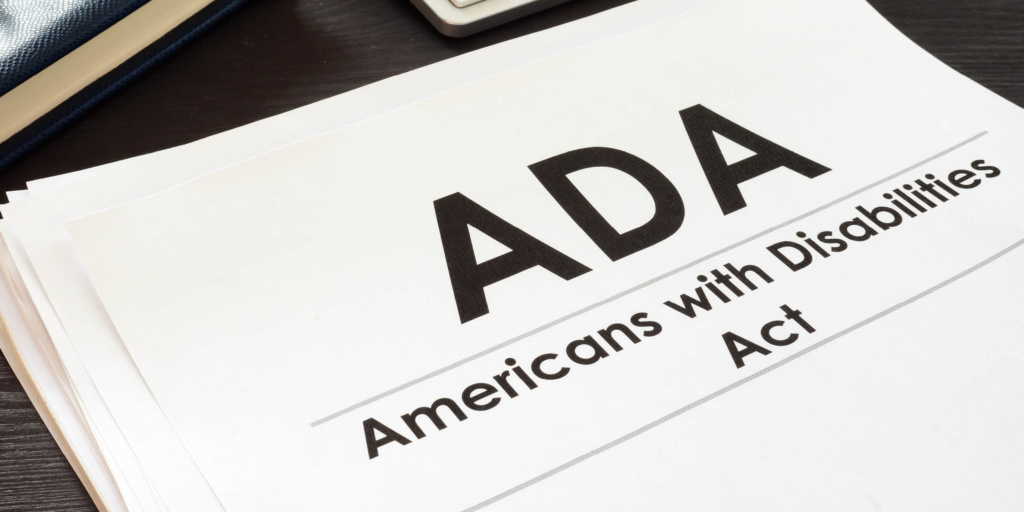On October 7, the U.S. Supreme Court refused to hear an appeal from Domino’s Pizza in a case where the appeals court ruled that a blind customer could sue the pizza chain under the Americans with Disabilities Act (ADA) because the company’s website did not provide him access. The case now goes back to district court for trial.
The company had argued that the ADA applied to its restaurants and stores but not its website or apps, because the law was enacted in 1990 before the development of the Internet. The court of appeals disagreed, and the Supreme Court declined a request for a further appeal.
This leaves Domino’s and other companies struggling to determine how to comply with the ADA’s requirements to make websites and apps accessible for the vision or hearing impaired. Thousands of lawsuits have been filed in federal and state courts in in the past several years under ADA Title III (public accommodations), but there are no federal standards to guide compliance.
The U.S. Department of Justice had published a supplemental notice of proposed rulemaking in May 2016 for state and local government websites under Title II of the ADA. That rulemaking was expected to establish the parameters for a similar rulemaking sometime in 2018 for websites in public accommodations, including business websites. But, in July 2017, the Trump Administration, as part of its regulatory reform agenda, placed the rulemakings for public accommodations and state and local governments on its “inactive list.” This means that there will be no regulations about public accommodation websites at least through 2020.
The Justice Department has settled a number of cases with private businesses because their websites were not accessible to users who are blind, hearing impaired, or have other disabilities. The settlements typically include requirements for technical revisions to the company website, employee training and recordkeeping.
Private plaintiffs’ lawyers, moreover, are not waiting for any Justice Department rulemaking; they are suing under the ADA statutory requirements themselves (which do not mention websites specifically). Meanwhile, even though the lower court decisions are split on whether a business website is a public accommodation under the ADA, the Justice Department has taken the position that all websites must be accessible to consumers with disabilities, even if it is not tied to a physical place of business that is open to the public. The court of appeals decision in the Domino’s case adopts that approach.
Thus, businesses are left to try and figure out how to avoid the possibility of future DOJ enforcement litigation and private sector lawsuits in this quickly evolving area. In the absence of DOJ regulations, many settlements approved by the DOJ and in civil litigation have implemented the World Wide Web Consortium’s Web Content Accessibility Guidelines 2.0 (WCAG) on how to make a website more accessible. These guidelines involve varying levels of accessibility, but the DOJ and counsel in civil litigation have signed off on settlements where a company agrees to make their website compliant with the WCAG 2.0 Level AA Guidelines.
For example, the WCAG guidelines ensure their media is usable by all. They give recommendations on how to present content in alternative forms (like adding captions to videos) without losing the meaning or coherence of the content (if a user increases the font size on the page, the page structure stays intact). They also recommend using contrast in images and text to ensure content is readable.
Additionally, images should contain a caption and alt text – unless those images are purely for decoration or spacing (in which case they should be implemented so that they can be ignored by assistive technology). Text alternatives for any non-text content might include large print, braille, speech, symbols or simpler language.
Content might also be presented in different ways (such as a simpler layout) without losing information or structure, or made easier for users to see and hear content (such as separating foreground from background).
Further, the guidelines recommend:
- Having a website that can be navigated with a keyboard;
- Making sure moving sections can be paused if a user needs more time;
- Ensuring pages and sections are clearly labeled so users can decipher where they are on the website;
- Making all functionality available from a keyboard;
- Providing users enough time to read and use content;
- Providing ways to help users navigate, find content and determine where they are.
Review and redesign of your company’s website can preclude claims for civil penalties or damages from enforcement actions and might make your company’s products and services more available to the general public.






